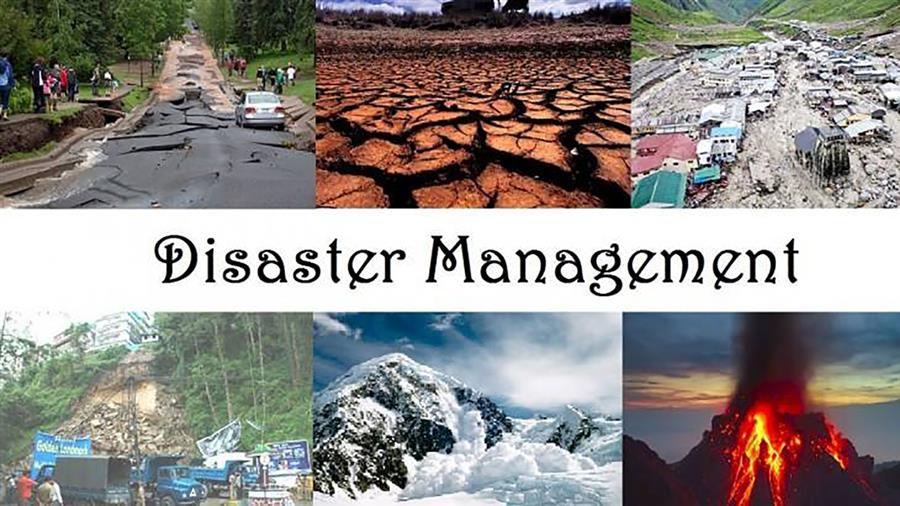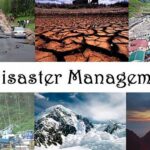Natural disasters-whether earthquakes, hurricanes, floods, or wildfires-are among the greatest challenges humanity faces. They often arrive with little warning, disrupt millions of lives, and cause massive economic and environmental damage. In the past, disaster management relied heavily on manual observation and slow communication systems, but today, technology has become a game-changer. From predicting disasters before they occur to coordinating relief efforts in real time, innovations in technology are saving lives and building resilience in ways once thought impossible.

Predicting Disasters: How Technology Helps
The first step in disaster management is prediction, and recent advances in data science, artificial intelligence, and satellite monitoring have dramatically improved our ability to forecast natural hazards.
- Satellite Imaging
Modern satellites provide real-time images of weather systems, ocean temperatures, and atmospheric changes. These visuals help predict hurricanes, cyclones, and even wildfires before they spread uncontrollably. - Artificial Intelligence (AI) and Machine Learning
AI-powered models analyze historical and real-time data to identify patterns and make predictions. For example, AI systems can estimate the likelihood of an earthquake in a given region or forecast flood risks based on rainfall and river flow data. - IoT Sensors
Networks of Internet of Things (IoT) sensors are now being deployed in disaster-prone regions. These devices monitor soil moisture, water levels, seismic vibrations, and air quality. In flood-prone areas, sensors along rivers can send early warnings when water reaches dangerous levels. - Climate Modeling
Supercomputers and advanced software simulate climate patterns decades into the future, helping predict how global warming might increase the frequency and severity of extreme events like heatwaves, storms, and droughts.
Technology in Disaster Preparedness
Prediction alone is not enough-preparedness ensures that communities can respond effectively when disaster strikes. Technology supports preparedness in several ways:
- Mobile Apps and Alerts: Governments and organizations use mobile alert systems to send emergency warnings directly to people’s phones. Apps like FEMA’s in the US or Pakistan’s NDMA alerts provide guidance, evacuation routes, and updates.
- GIS Mapping: Geographic Information Systems (GIS) create detailed hazard maps that identify high-risk zones, making it easier to plan evacuation routes, shelters, and resource distribution.
- Virtual Reality (VR) Training: Emergency responders now train using VR simulations, practicing disaster scenarios in safe, controlled environments. This ensures better decision-making under real pressure.
Technology During Disaster Response
When disaster strikes, real-time communication and coordination are crucial. Here’s how technology steps in:
- Drones
Drones are now used to survey affected areas, locate trapped victims, and deliver essential supplies like food, water, and medicine. They provide quick aerial views when roads are blocked or unsafe. - Emergency Communication Systems
In many disasters, mobile networks fail. Technologies like satellite phones, mesh networks, and emergency radio systems keep responders connected when traditional communication collapses. - AI and Big Data
AI systems process massive amounts of real-time information-such as social media posts, emergency calls, and satellite images—to identify hotspots where people need urgent help. This ensures resources are directed where they’re needed most. - Robotics
Robots are being developed to enter collapsed buildings, search for survivors, and clear debris. They can access dangerous areas that are unsafe for human responders.
Post-Disaster Recovery
Technology doesn’t stop being useful once the disaster is over. In the recovery phase, it helps communities rebuild and recover faster:
- Blockchain for Aid Distribution: Blockchain technology ensures that financial aid and relief resources reach the right people without corruption or misuse.
- Smart Infrastructure: Cities are now adopting disaster-resilient designs such as earthquake-resistant buildings and flood-proof infrastructure, often guided by data-driven insights.
- Remote Healthcare: Telemedicine platforms help disaster victims access medical advice when hospitals are overwhelmed or damaged.
- Data Analytics for Reconstruction: Governments and NGOs analyze data from past disasters to improve urban planning, making communities more resilient against future events.
Success Stories
- Japan’s Earthquake Preparedness: Japan uses a combination of seismic sensors and AI algorithms to send earthquake alerts seconds before tremors are felt, giving people precious time to seek safety.
- Cyclone Warning Systems in India: Advanced meteorological tools and satellite forecasting have significantly reduced cyclone-related deaths in recent years by providing timely evacuation orders.
- Wildfire Monitoring in California: AI-driven platforms and drones are used to predict wildfire spread and coordinate firefighting operations more effectively.
Challenges Ahead
While technology offers powerful tools, there are still obstacles:
- High Costs: Advanced systems like satellites and supercomputers are expensive and often limited to wealthier nations.
- Digital Divide: Communities without reliable internet or mobile access may not benefit from early warning systems.
- Data Privacy: Collecting massive amounts of personal and environmental data raises questions about security and privacy.
- Overreliance on Tech: Technology can fail during disasters, so human judgment and community-based resilience remain equally important.
The Future of Disaster Management
Looking ahead, we can expect even more integration of technology in disaster management:
- AI-Powered Global Disaster Networks that share real-time updates across countries.
- Smart Cities equipped with sensors that automatically shut down power or redirect traffic during emergencies.
- Climate-Adaptive Infrastructure designed to handle floods, rising sea levels, and extreme heat.
- Brain-Computer Interfaces (BCIs) for rescue workers to control drones or robots with their thoughts, improving speed and efficiency.
Conclusion
Technology is no longer just a supportive tool in disaster management-it is at the heart of saving lives and reducing damage. From predicting hurricanes to guiding recovery efforts, innovations in AI, IoT, drones, and data analytics are redefining how we prepare for and respond to natural disasters. However, ensuring equal access, affordability, and ethical use will be crucial in making these technologies work for everyone.
Disasters may be inevitable, but with the right technological solutions, their impact does not have to be catastrophic. Humanity’s ability to survive and thrive in the face of nature’s fury depends on how wisely we harness these innovations. Also Check Edge Artificial Intelligence – Detailed Guide – 2025.


